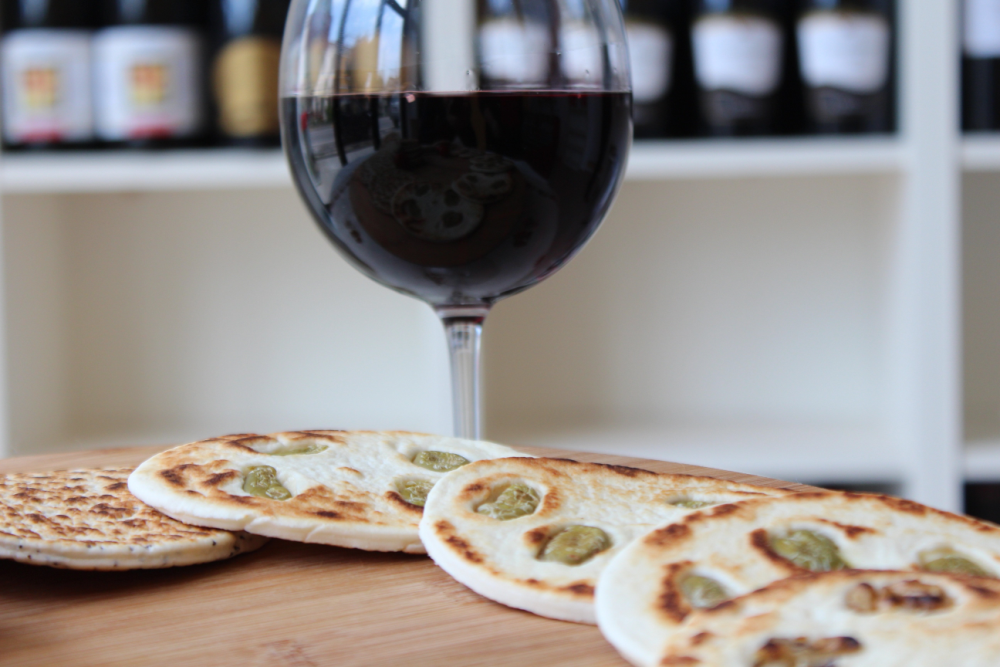
RAVENNA / EMILIA ROMAGNA
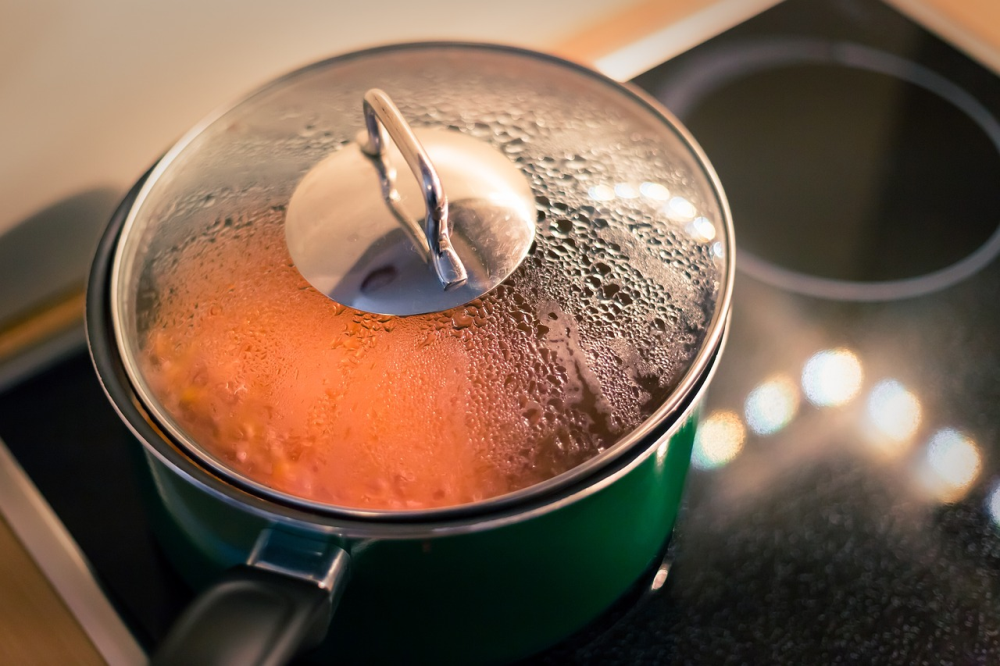
CASALE MONFERRATO / PIEMONTE
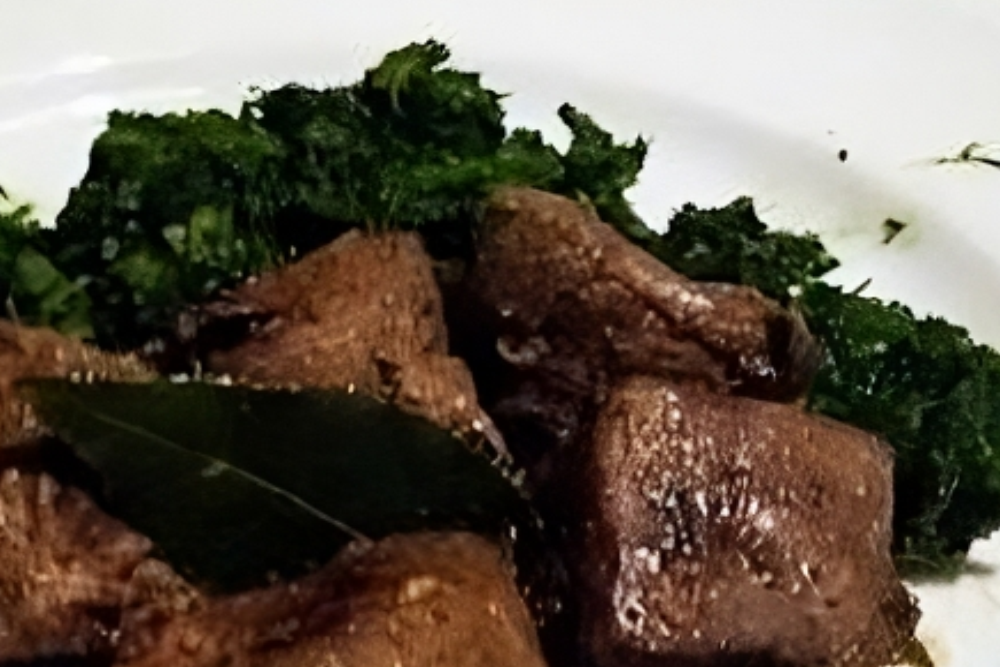
LOCAL CUISINE
Let us tell you about the most representative recipe of our town: “The fegatelli of S. Miniato”. We prepare them with care and passion, following an ancient recipe passed down from generation to generation. Each “fegatello” consists of two pieces of lean pork meat and one of liver, skillfully skewered with a sprig of wild fennel or wrapped in mesh. The fennel, with its aromatic scent, gives the bite a rustic, almost wild soul, reminiscent of the hills and fields of this generous land. The slow cooking, under the watchful eye of the cook’s expert hands, seals every flavor, every essence. After abundant browning, we preserve them under lard. From the very first bite, all the flavors emerge: the sweet blends with the salty, the softness of the liver fuses with the meaty texture of the pork, while the fennel and spices dance on the palate. An experience that speaks of woods and sunsets, of hands marked by work and ancient knowledge, of a land that knows how to be loved through its simplest yet most precious fruits.
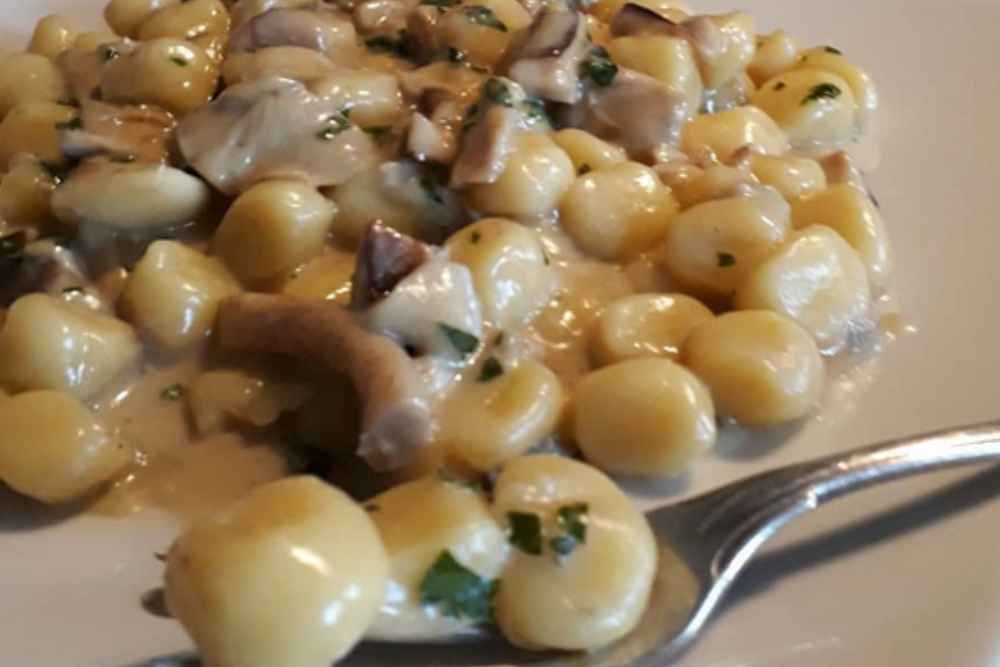
POGGIO RUSCO / LOMBARDIA
A recipe from our Mantuan cuisine that we love to put on the table during the cool autumn days, when our poplars along the banks are swayed by the wind, is “Small Gnocchi with Poplar Mushrooms, Gorgonzola, and Parsley.”
We prepare them by boiling the potatoes with their skins on until they become soft, then we add the flour, egg, and a pinch of salt and knead gently.
Then we take a large pan, heat the extra virgin olive oil together with the butter, and throw in the poplar mushrooms. After sautéing them well, we add the pieces of Gorgonzola, letting it melt slowly. The whole is then combined with the already boiled gnocchi, allowing the flavors to blend harmoniously. This recipe is a tribute to the beauty and goodness of the Mantovano. The gnocchi, small and tender, capture the essence of the poplar mushrooms, while the Gorgonzola provides an irresistible creaminess. The fresh parsley, with its herbal note, completes this gastronomic picture, making each bite a journey through the authentic flavors of a land rich in traditions and love for cooking. Bon appétit!
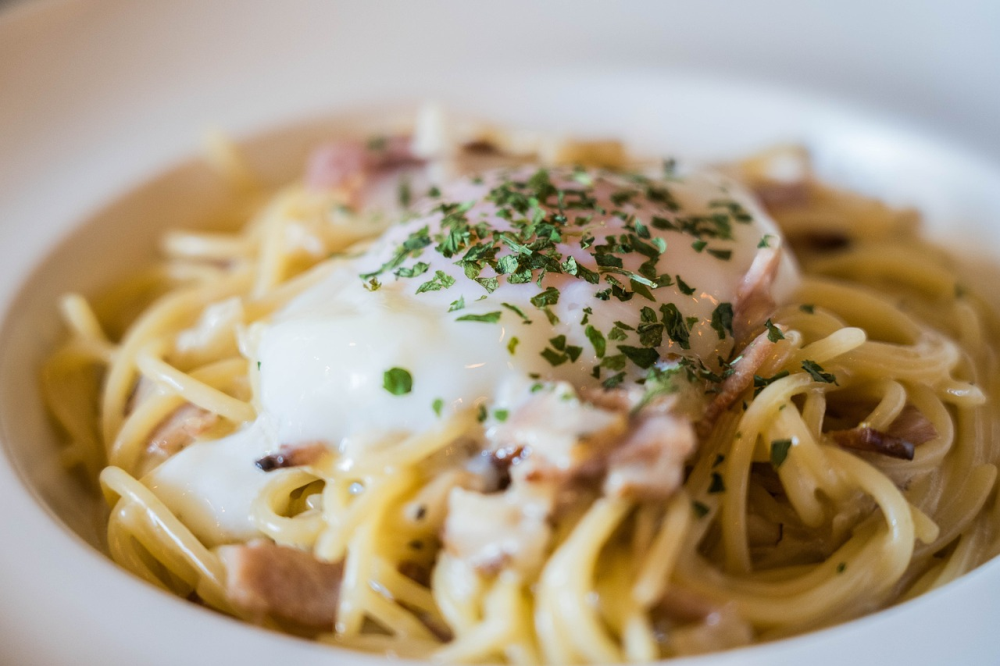
PIGLIO / LAZIO
The dish that best embodies the soul and flavor of our ancient land is “pasta alla carbonara”.
The pasta is tender and al dente, enriched by the golden color of the eggs and the crunchiness of the guanciale.
In the pasta, flavors blend harmoniously: garlic and black pepper add a bold note, while pecorino, with its salty sweetness, envelops each bite in a warm embrace. The thinly sliced and golden-browned guanciale imparts a smoky note that evokes the scents of lit fireplaces on winter evenings. Each bite is a journey through the centuries, a taste of the history and tradition of this generous land. Pasta alla carbonara from Ciociaria is more than just a dish: it’s a ritual, a culinary experience that always leaves an indelible mark on the palate.
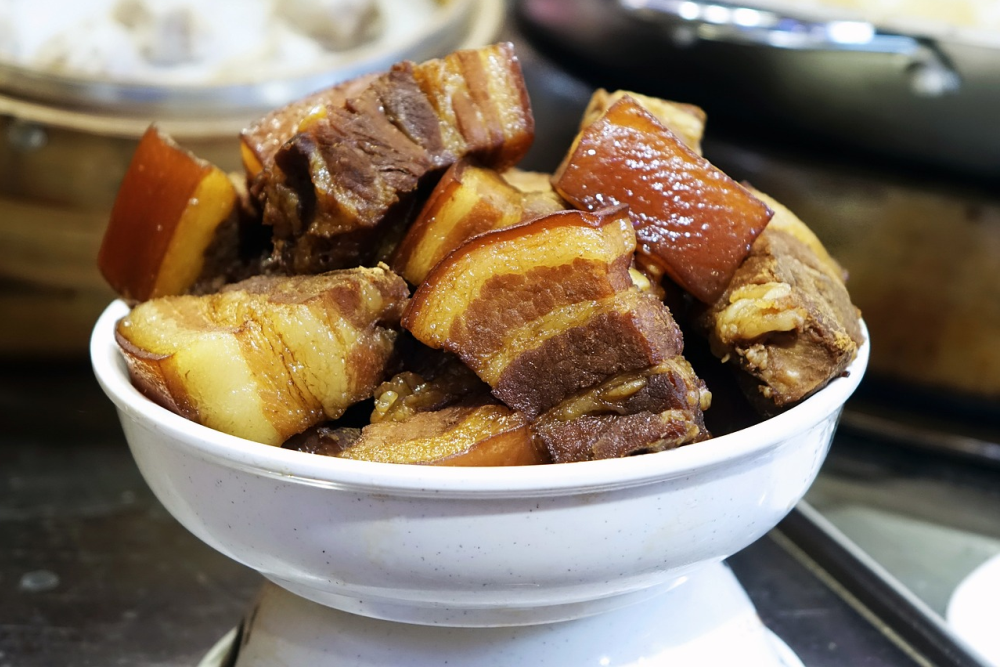
CASTELNUOVO / TRENTINO ALTO ADIGE
In our mountain regions, when we want to celebrate Trentino cuisine, especially during the winter season, we prepare a “Brasato al Teroldego.” A preparation that begins the night before when the beef pieces are immersed in a marinade of Teroldego wine, carrots, celery, onions, garlic, and aromatic spices so that during the night the meat slowly absorbs the robust and complex flavors of the wine and herbs and prepares for the long and patient cooking process.
After hours of slow cooking, the meat becomes so tender it melts in your mouth. The cooking liquid is transformed into a velvety sauce, enriched by the flavor of the vegetables and the wine. When the brasato is finally ready, it is served hot, accompanied by simple side dishes that enhance its flavor.
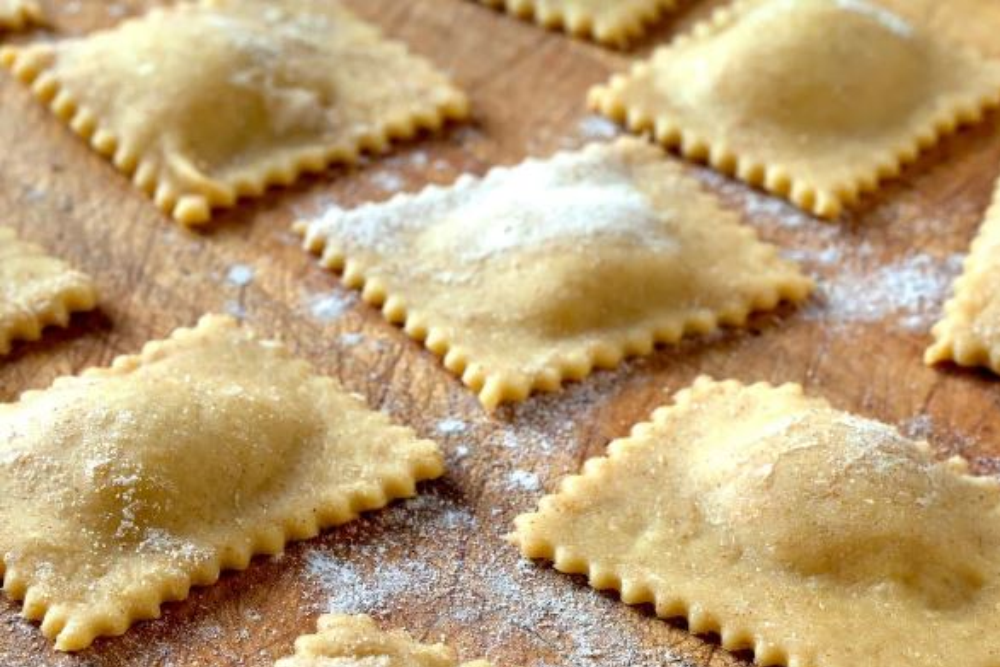
CALOSSO / PIEMONTE
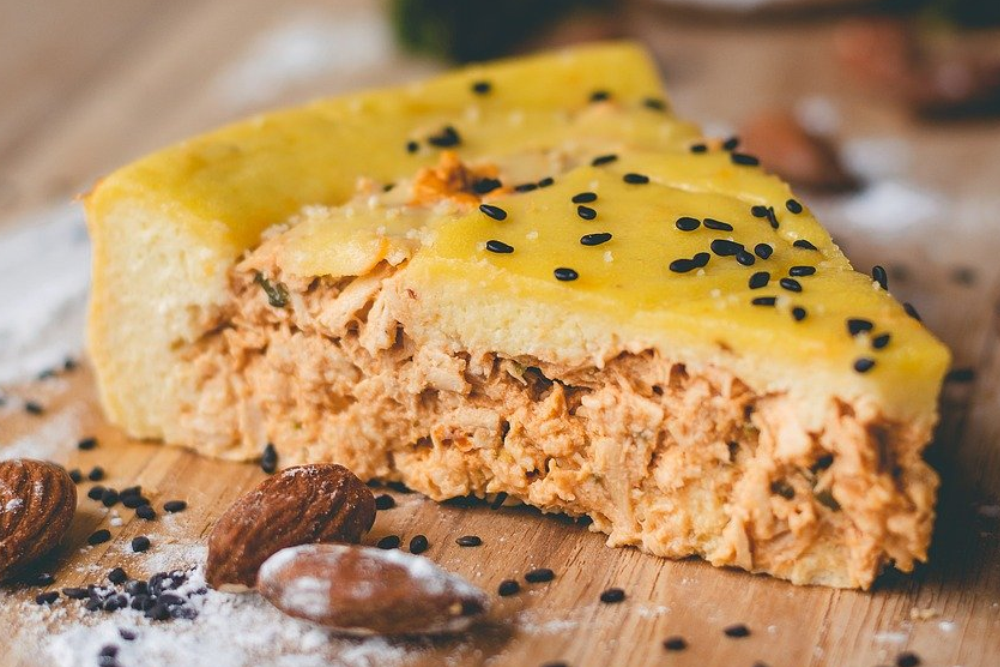
VALDOBBIADENE / VENETO
Not only in the winter months but throughout the year, we prepare “Almond and Prosecco Cake” in our family kitchens. The cake requires a simple yet precise preparation in several steps. First, a cream of butter and sugar is made, to which the eggs are gradually added. Meanwhile, in a separate bowl, flour, toasted and chopped almonds, and baking powder are mixed. Once everything is combined and homogeneous, the mixtures are joined together into a single batter. At this point, the perfect combination of Prosecco and lemon zest is added to the batter, and it is then placed in the oven for baking. The final touch, before serving, is a light dusting of powdered sugar. We usually serve it at the end of a meal, but it is also perfect as an afternoon snack accompanied by our fine wines.
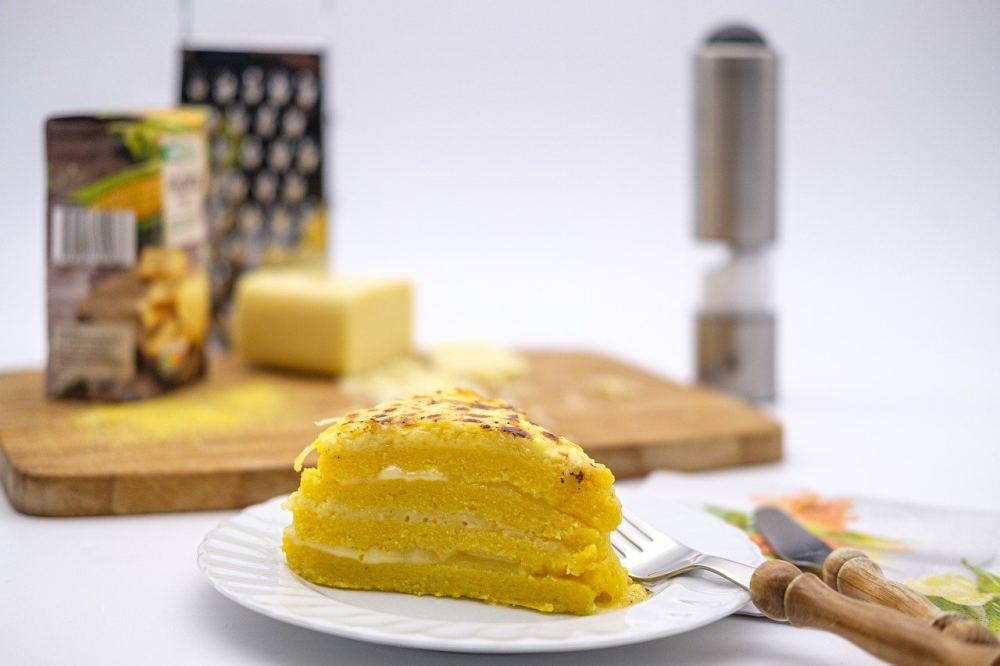
CORNO DI ROSAZZO / FRIULI VENEZIA GIULIA
Rather than talking about Friulian cuisine, it would be more accurate to talk about “Friulian cuisines” due to the variety of environments in which we find ourselves, ranging from coastal areas with a maritime vocation and a fish-based cuisine to the inland areas. A dish that you can find on all our tables is polenta, prepared in different ways, sometimes with buckwheat, sometimes with cornmeal, preferably accompanied by game meat such as wild boar or roe deer. Naturally, given the brotherhood and proximity, we also feel the influence of Slavic culinary traditions interpreted in the Friulian way, such as Bizna, a potato and bean soup.
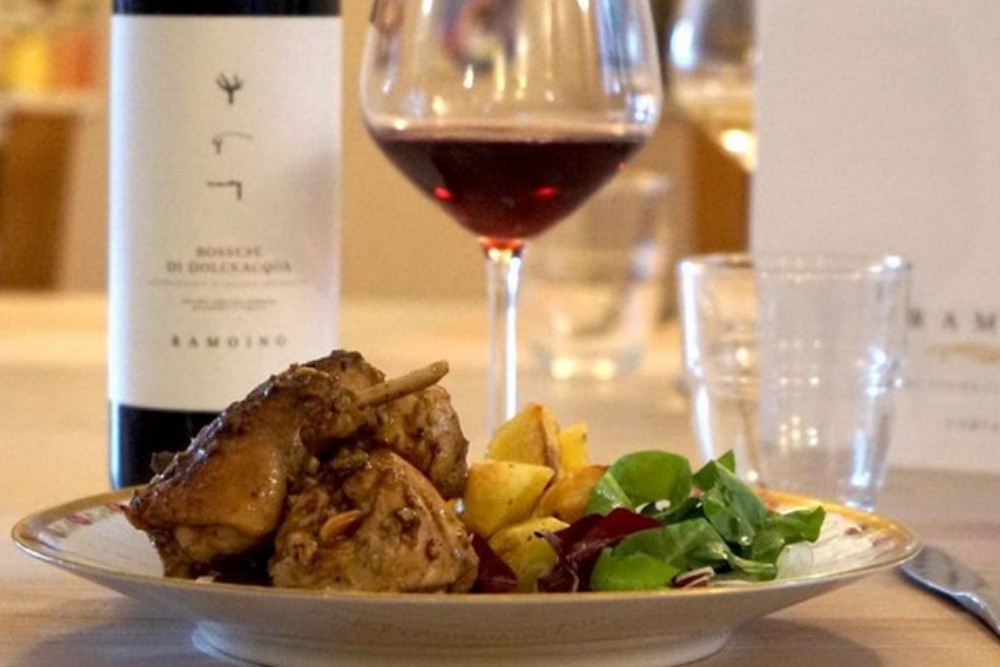
SAROLA / LIGURIA
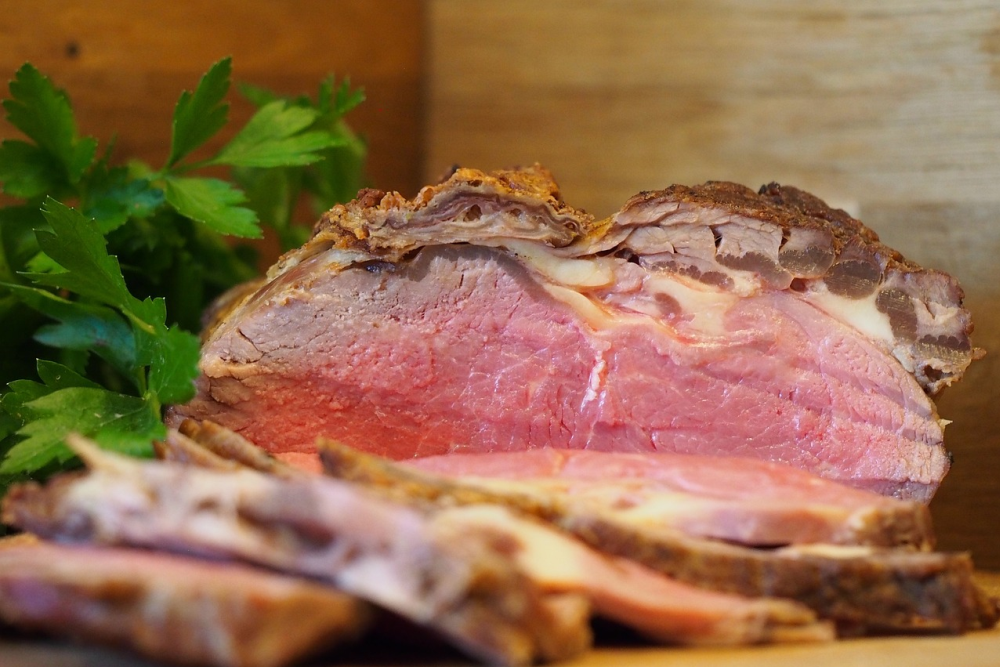
BATTAGLIA / SICILIA
We’ll tell you how to transform simple ingredients into an unforgettable dish like ‘Falsomagro alla Siciliana,’ one of the most representative dishes of our inland Sicilian territory. Imagine a slice of veal round, carefully flattened until it becomes as thin as a veil, ready to receive a sumptuous filling. On this canvas of meat, generous slices of pancetta are laid out.
A mixture of ground beef, expertly enriched with grated pecorino cheese, crunchy breadcrumbs, fresh parsley, and a pinch of minced garlic, is spread over the pancetta, creating a blanket of spices and aromas. In the heart of this filling, place hard-boiled eggs, symbolizing rebirth and tradition, and cubes of provolone cheese, ready to melt into a creamy embrace during cooking. In a large saucepan, a drizzle of extra virgin olive oil heats up, ready to welcome the ‘Falsomagro.’ The roll crackles and browns, taking on a golden hue that promises crunchiness and flavor. Once golden on all sides, it is temporarily set aside, while in the same saucepan, onions, carrots, and celery are sautéed – humble vegetables that, with their sauté, create the aromatic base for the sauce.
The ‘Falsomagro’ returns to the saucepan, where it is deglazed with a glass of red wine, whose bouquet blends with those of the meat and vegetables. The dense and velvety tomato sauce envelops the roll, which cooks slowly, absorbing every flavor, every aroma. After an hour and a half of patient waiting, during which the sauce thickens and enriches, the ‘Falsomagro’ is ready.
Removed from the saucepan, it rests briefly, allowing its juices to distribute evenly. The twine is removed, revealing the roll in all its perfection. Sliced thickly, each cut reveals the filling, with hard-boiled eggs and provolone peeking through the meat. Typically, we serve it on the table with roasted potatoes or a fresh salad.
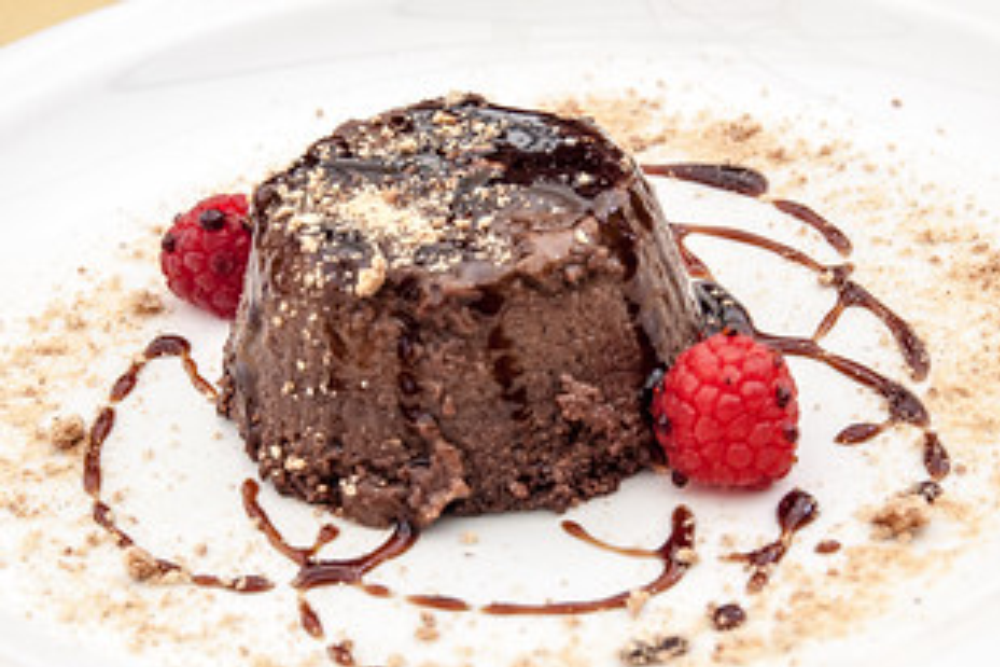
FERRERE / PIEMONTE
In our corner of Piedmont, among enchanting villages and century-old cellars, one of the region’s most emblematic and beloved desserts is born: the Bunet. The Bunet is much more than a simple dessert; it is an ode to tradition, a symphony of flavors that tells stories of family and winter evenings spent around a table. Its name, which recalls the ancient Piedmontese term for “cap” or “beret,” evokes the shape of the mold in which it is prepared, as if to suggest a warm and embracing hug. This dessert combines cocoa, amaretti cookies, and liquor, creating a rich and harmonious balance of flavors, while caramel adds a touch of sweetness and crunchiness.

PIANELLA / ABRUZZO
There is a dish we would like to suggest to you that, in its simplicity, encapsulates the essence of the mountains and green pastures of the Apennines. It tells the tale of shepherds descending from the hills, carrying with them the scents of wild herbs used to flavor the sheep meat for making “arrosticini”. The sheep meat, symbolizing abundance and nourishment, is cut into small cubes and delicately threaded onto thin wooden skewers. The grill, known as “fornacella”, is a long channel that accommodates these skewers. Here, we serve them piping hot, enjoyed directly from the skewer. Don’t forget to accompany them with crusty, rustic homemade bread, drizzled with a hint of olive oil and infused with a touch of garlic. And on the table, request a Montepulciano d’Abruzzo, with its ruby color and intense flavor, as the ideal companion to this delight.
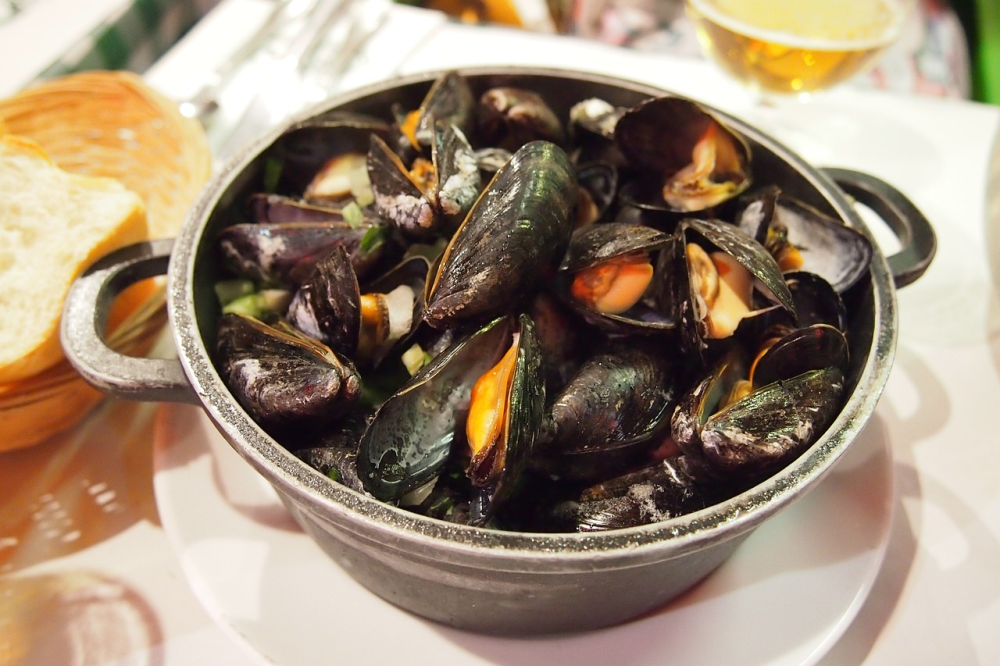
GIOVINAZZO / PUGLIA
We would like to introduce you to a dish that is fully part of our local culinary tradition, combining the resources of the land and sea: ‘Rice, mussels, and potatoes.’ This dish originates from the farming and seafaring traditions of Bari. It is often prepared in a baking dish and baked in the oven, allowing the flavors to blend and create a rich and complex taste. The dish is prepared by layering the ingredients in a baking dish. It starts with a layer of potatoes, followed by a layer of uncooked rice, and then a layer of mussels. This process is repeated until the baking dish is filled, with each layer lightly dusted with grated cheese (usually pecorino), garlic, parsley, cherry tomatoes, and a drizzle of extra virgin olive oil. Everything is then covered with water or fish broth, which will cook the rice and blend the flavors.
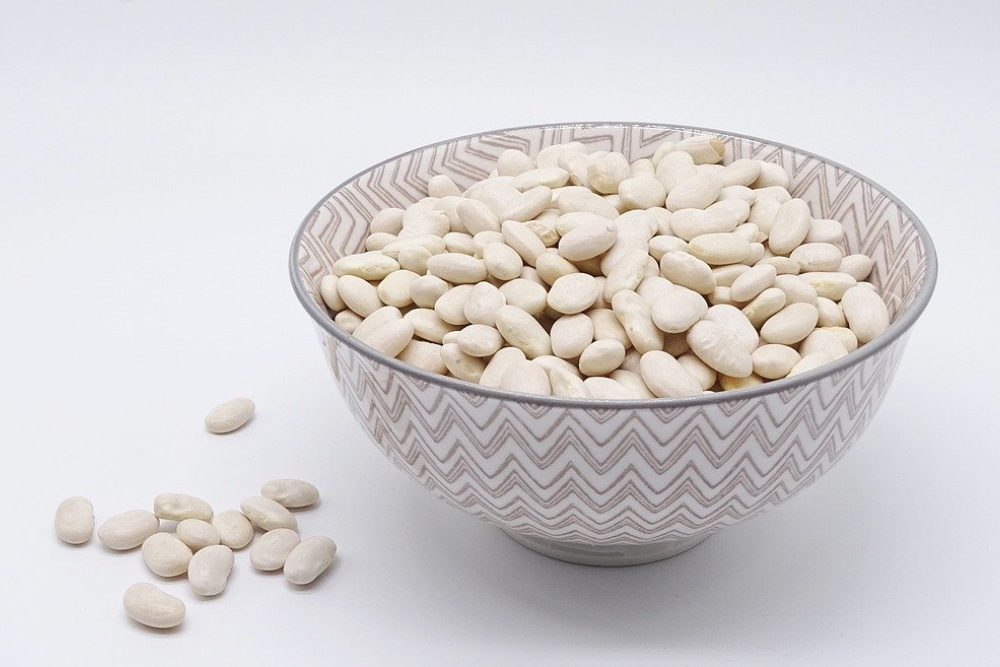
SANSEPOLCRO / UMBRIA
To lovers of earthy products, we recommend a characteristic local dish that features Fagioli di Sorana. These small white treasures, carefully harvested in the Sorana region, are renowned for their delicacy and velvety texture, and they are the undisputed protagonists of the soup, whose subtle and soft flavor captivates every palate. The beans are mixed in a smoking pot, ideally over a wood fire in a fireplace, and they are accompanied by rustic Tuscan bread, garlic sliced into small cloves, and sprigs of rosemary, all in extra virgin olive oil from Tuscany. The Zuppa di Fagioli di Sorana is not just a dish; it is a journey into the heart of Tuscany, an experience that speaks of land, family, and tradition. A soup that, with its simplicity, manages to win over the hearts of all who taste it.

PERUGIA / UMBRIA
Haven’t been to Perugia yet? Remember, when you visit our city, to enjoy a “Torta al Testo.” It is our most typical dish, simple but tasty, and deeply rooted in Umbrian culinary tradition. Torta al Testo is a flat and round focaccia, prepared with simple ingredients such as flour, water, salt, and yeast, and cooked on a cast iron plate called “testo.” This plate gives the dish its name. The torta has a crispy exterior and a soft interior. Its origins seem to date back to Roman times, and since then, it has never lost its popularity as a common dish always present at local festivals and on our Perugian tables. The traditional preparation involves kneading the ingredients until obtaining a smooth and homogeneous consistency. The dough is then rolled out and cooked on the well-heated testo, turned once to cook both sides evenly. We particularly love its versatility, suitable both as a snack and as a main dish.
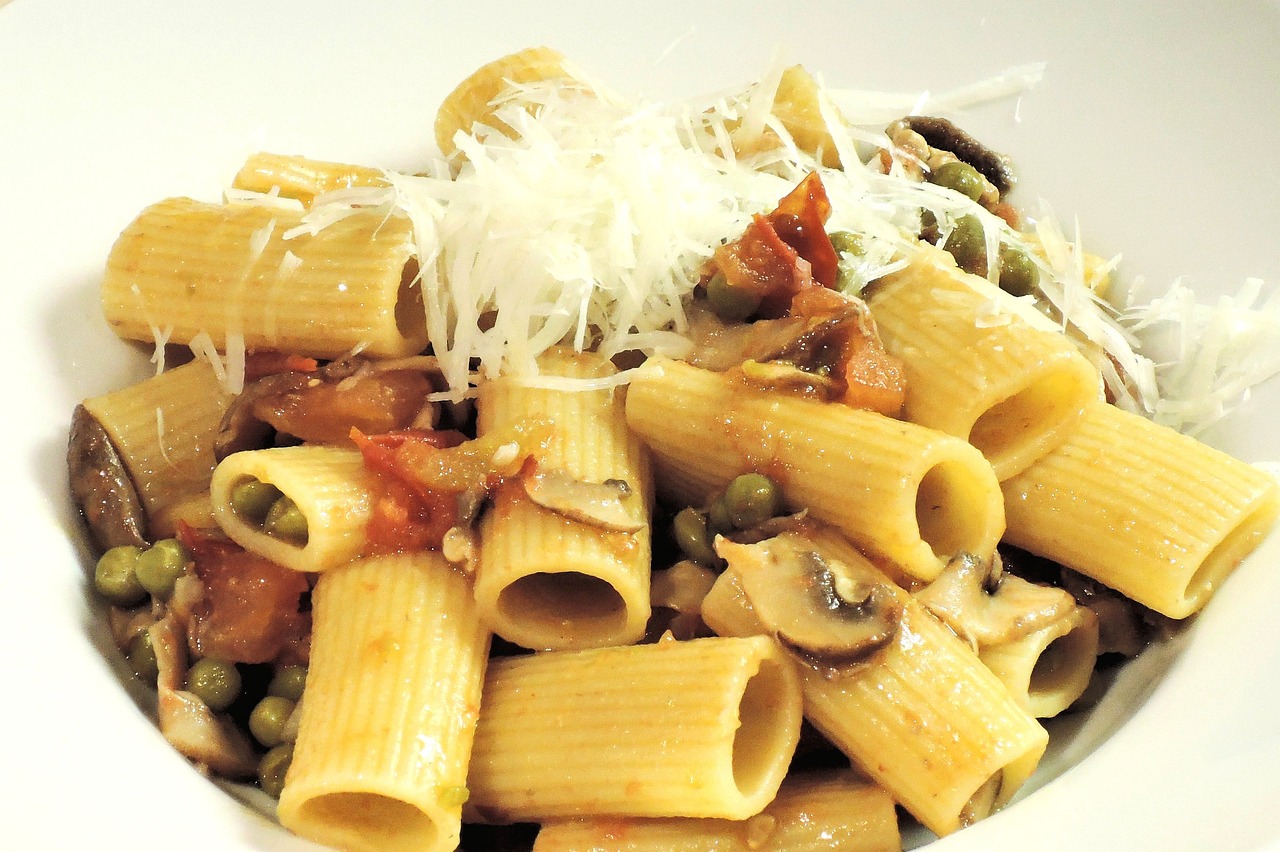
BRACCIANO / LAZIO
A dish that embodies the simplicity and goodness of our Lazio tradition is “Pasta alla Gricia.” For this recipe, we usually use rigatoni or bucatini coated in a creamy, golden sauce. The guanciale, cut into cubes, is cooked to perfection, with crispy edges and a tender center, giving off an enticing aroma that invites the first taste. The pecorino romano cheese, generously grated, melts with the warmth of the pasta, creating a delicious creaminess that envelops every bite. Finally, a sprinkle of freshly ground black pepper adds a touch of spiciness that enhances the flavors without overpowering them. The guanciale, with its rich and salty taste, pairs perfectly with the pecorino romano, creating a sublime balance. The black pepper, with its subtle kick, completes the dish with a touch of elegance.

SCANSANO / TOSCANA
In our vast and unspoiled lands of Maremma, one of Tuscany’s most iconic dishes is born: Acquacotta, a rustic soup composed of simple and genuine ingredients carefully gathered from the garden and henhouse: tomatoes, onions, celery, extra virgin olive oil, and Tuscan bread. In a large terracotta pot, finely chopped onions are sautéed in extra virgin olive oil. Carrots and celery are added to bring sweetness and freshness, while garlic enriches the base with its intense aroma. Juicy red tomatoes are added to the sauté. Pure water, poured with slow and precise movements, transforms everything into a soup that simmers gently, blending the aromas and flavors.
Fresh eggs, collected from the henhouse, are delicately cracked over the bread. Their egg white solidifies slightly while the yolk remains creamy, a golden heart that holds the promise of a nourishing and comforting meal. The hot soup, generously poured, cooks the egg just enough, creating a harmony of textures and flavors.

SILVANO PIETRA / LOMBARDIA
From our farming traditions, born of hard work in the fields demanding great physical energy, comes a typical dish known as “Brasato al Barbera”. This recipe consists of a piece of good beef, along with onions, carrots, celery ribs, and of course, a bottle of Barbera, the ruby wine that carries the character and soul of the local vineyards. The preparation of the brasato begins the evening before, when the meat is placed in a large bowl surrounded by roughly chopped vegetables and aromatic spices, generously poured over with Barbera wine. The next morning, the meat, drained from the marinade and carefully dried, is lightly floured and ready to be seared to achieve a golden crust. When serving, remember to slice it into very thin pieces to fully savor its flavor.

CITTA' DI CASTELLO / UMBRIA
One of our typical dishes that reflects our love for simple and genuine things is the “torta al testo”, also known as “crescia” in some parts of Umbria. This traditional dish is a kind of focaccia cooked on a stone slab called “testo”. It starts with white flour poured into a large bowl with a pinch of salt and extra virgin olive oil, mixed with the pure water from our springs. The pure water from Umbrian springs slowly combines with the flour, carefully mixed together with a golden thread of extra virgin olive oil, symbolizing the generosity of the Umbrian land.
After heating the “testo” over a lively flame, a soft dough is spread thinly over it by the housewives, who turn it several times until it becomes crispy and ready to be cut in half. At this point, get ready for an explosion of flavors from local delicacies with which we are accustomed to filling it, such as pecorino cheese, prosciutto, or sausage.

ISSOGNE / VALLE D'AOSTA
It is prepared throughout the Valle d’Aosta and of course also in our district because it is perfect for facing the cold winter days in the mountains. I’m talking about “Zuppa alla Valdostana”, rustic and hearty, based on local ingredients such as Fontina cheese and classic vegetables like onions, carrots, potatoes, all combined with sliced rye bread. It is cooked in broth, usually vegetable, which spreads an inviting and irresistible aroma in the air, best enjoyed with a glass of red wine from our valleys.

MONTA' / PIEMONTE

GAVI / PIEMONTE
A dish you mustn’t miss trying if you visit our region is definitely the Ravioli di Gavi, named after the family that first created them: the Raviolo family, owners of a historic local inn. The secret of the recipe lies in the “tuccu,” the sauce that envelops and completes these ravioli, performing its magic. In a copper pot, amid the sizzle of oil and melting butter, a fragrant sauté of onion, carrot, and celery comes to life. The golden-browned beef melds with the red wine, which evaporates, leaving behind an intense and complex aroma. Peeled tomatoes join the beef broth, rosemary, and bay leaves, simmering slowly over low heat for hours. Time here is a fundamental ingredient: only with patience can one achieve that dense and rich sauce, echoing traditions passed down through generations. Few know that, due to its aromatic characteristics and connection to the region, the ideal wine to accompany the ravioli is none other than GAVI DOCG. Don’t forget to add it to your table!
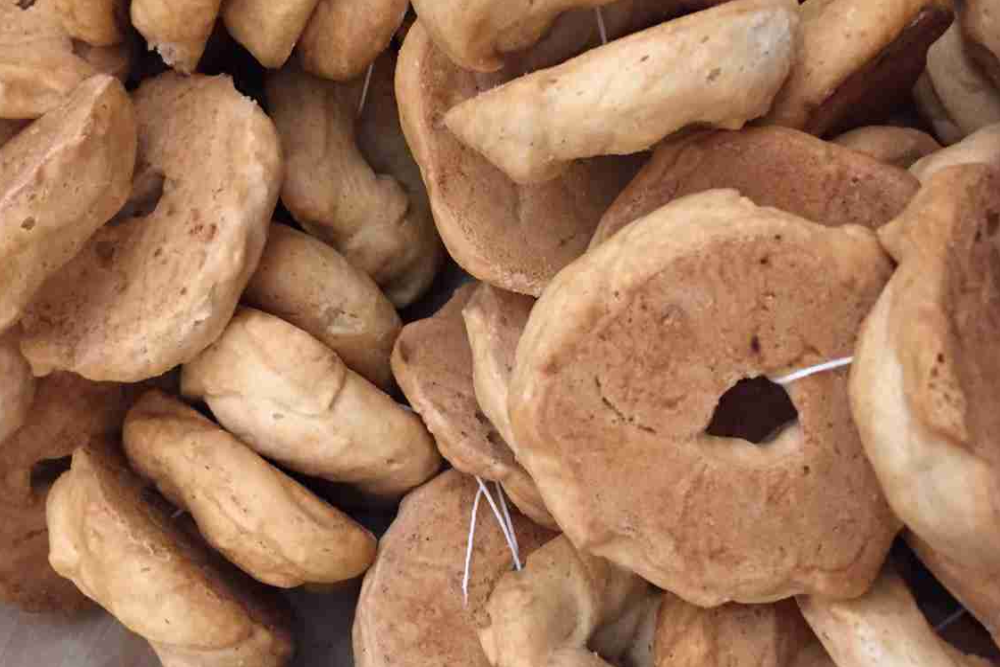
OLTREPO'PAVESE / LOMBARDIA
The Brasadè recipe from the Oltrepò Pavese, known since the 1800s, is undoubtedly a classic. The name comes from the double cooking process, with the first step being boiling and the second being in the oven. They have the typical ring-shaped form, obtained from a dough for sweets without leavening. All of them are made through a manual process that has been passed down through generations. This popular dish is traditionally made into a necklace of eleven pieces, with five of them facing in one direction and the other six in the opposite direction. When passing through our villages, it’s easy to find Brasadè festivals in the town squares.

PONTE DELL'OGLIO / EMILIA ROMAGNA
We call it “La torta d’erbi” because it represents the best way to showcase the fruits of our territory. We prepare it with a variety of wild aromatic herbs that we gather in the fields and forests of the Val di Nure. We carefully select the herbs, respecting the rhythm of the seasons, especially chard leaves, wild spinach, borage, and nettles, which give the preparation a vibrant flavor waiting to be discovered. We immerse them in a soft embrace of eggs and cheese, with which they harmoniously blend, creating a enveloping texture and a flavor full of authenticity. This cake, the heart of the local culinary tradition, tells ancient stories and secrets kept in the tales of grandmothers, bringing to the table the essence of the Val di Nure itself. Once baked, the “torta d’erbi” is sliced to offer moments of authentic joy and pleasure to the palate.
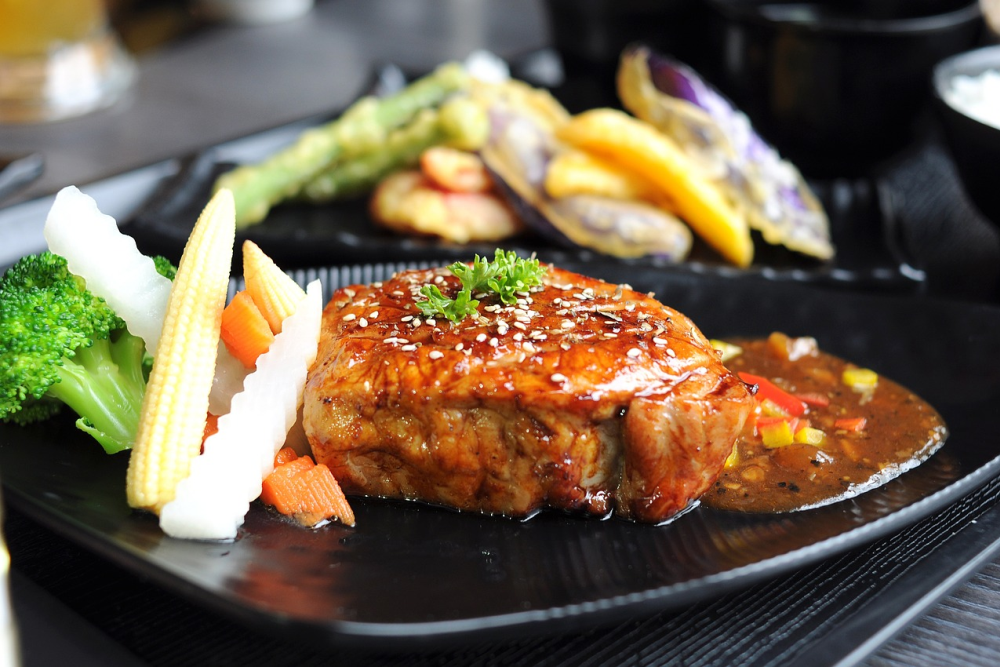
SAN MINIATO / TOSCANA
S. Miniato’s cuisine is immersed in the broader and rich world of Tuscan cuisine. However, the local cuisine manages to maintain its own distinct identity, primarily due to the white truffle of S. Miniato. This key ingredient in the cuisine enhances the aroma and flavor of both the first courses and the classic and timeless Tuscan Florentine steak.
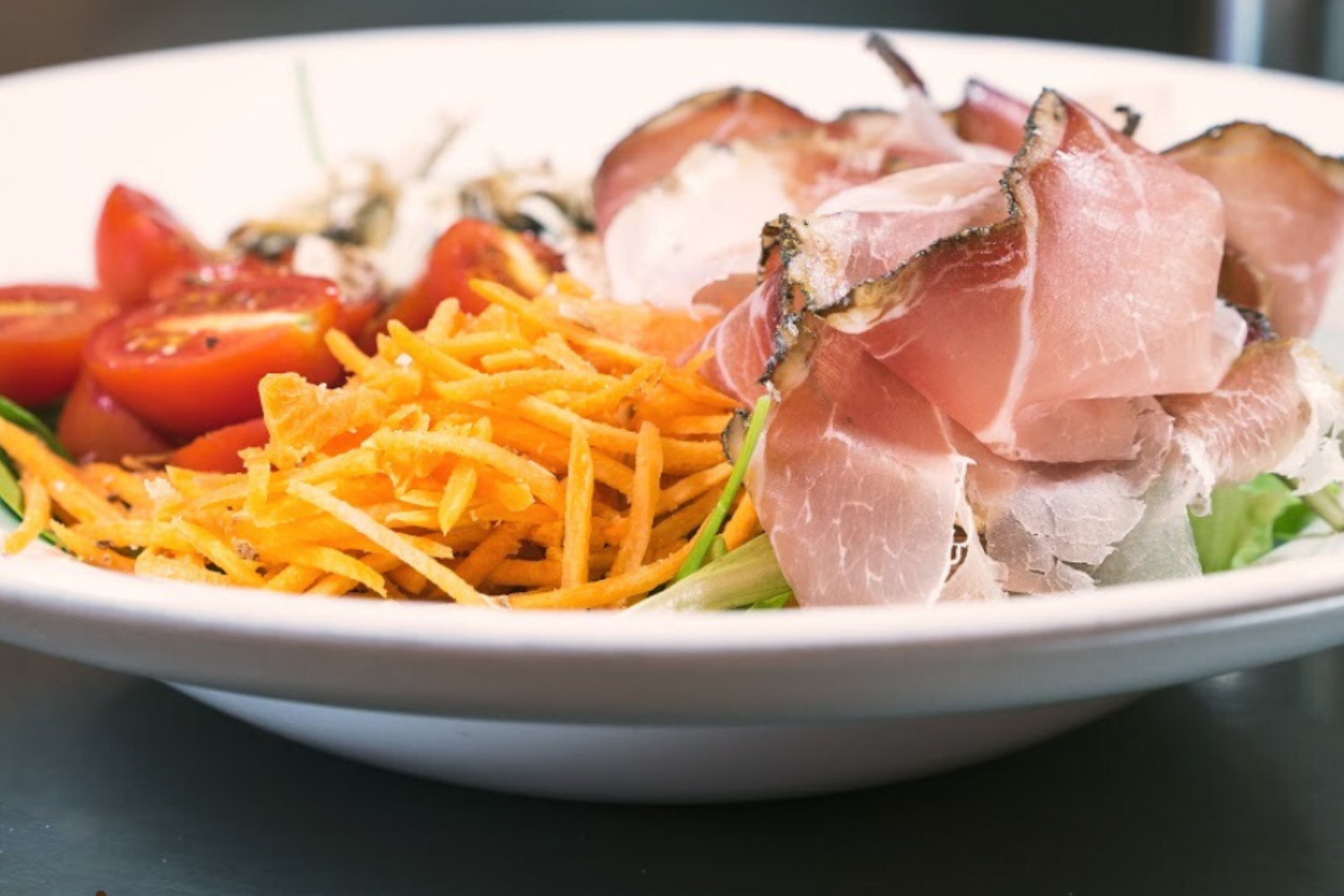
ALBA / PIEMONTE
The cuisine of Alba can satisfy a wide range of tastes and the most discerning palates with its traditional Langhe dishes:
The classic and renowned “tajarin” all’uovo, similar to tagliatelle but thinner, with a width of 2/3 mm, prepared with a generous amount of eggs that give them a sunny yellow color.
Beef “Fassona” tartare, finely chopped with a knife. Fassona is a highly prized cattle breed raised in Piedmont and is chopped with a knife to preserve its excellent qualities.
Traditional dishes that pair perfectly with the king of the Langhe region, “Il Tartufo” (truffle).
The “Tonda Gentile Trilobata delle Langhe” hazelnut, known as the “queen” of hazelnuts. It can be enjoyed as a fruit, used to make
Gianduja Cream, or in the typical Hazelnut Cake. It can be savored as is or accompanied by cream or zabaione (a traditional Piedmontese custard made with egg yolk, sugar, marsala, or another sweet liqueur).
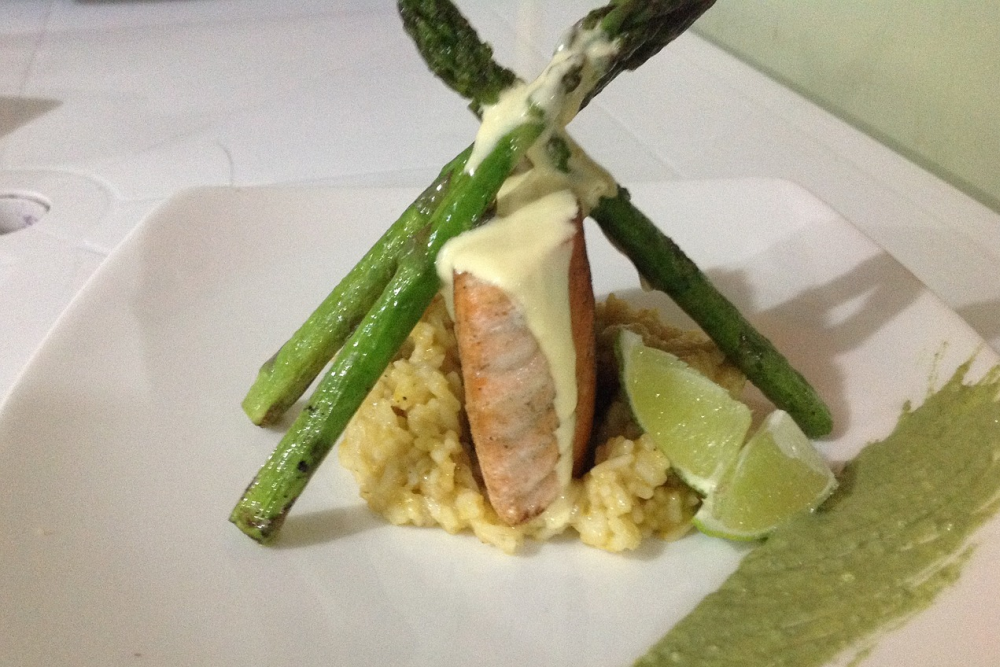
BASSANO SUL GRAPPA / VENETO
One of the most appreciated products of our agriculture is Bassano asparagus. With these asparagus, we typically prepare a risotto with a delicate and unforgettable flavor for those who are passionate about good food. We use Carnaroli rice, which is added to the cooking process along with a mixture of asparagus flavored with onion and butter, seasoned with salt and pepper in vegetable broth. A sprinkle of Grana Padano cheese is a must when serving in the dish.
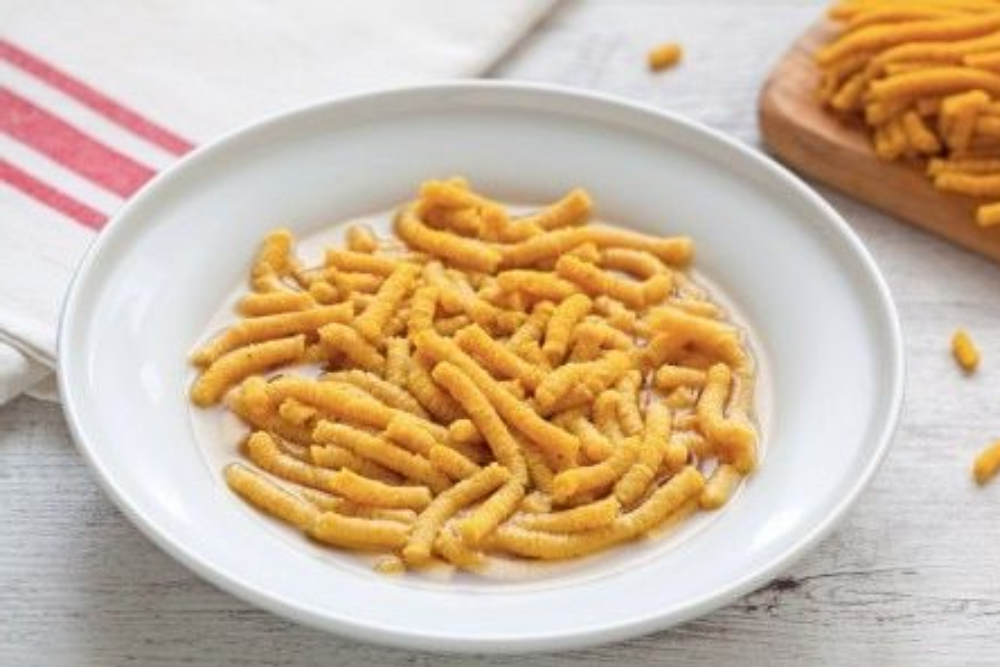
RAVENNA / EMILIA ROMAGNA
During the holidays in Ravenna, Passatelli are a must on our family tables. This simple recipe results in a delicious dish made from cheese, eggs, breadcrumbs, and a spice commonly used in Emilia-Romagna, including certain types of desserts: nutmeg. After preparing the mixture, it is passed through a potato masher with large holes. Cooking them in meat broth completes this traditional dish, which is one of our favorite soups.
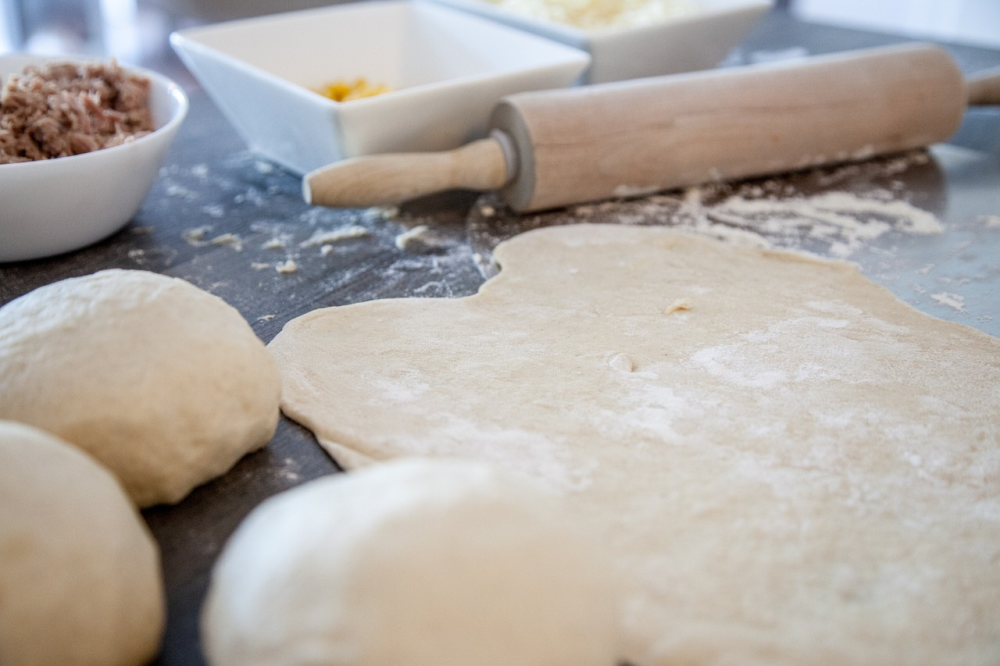
MONTI SIBILLINI / MARCHE
If you love local village festivals with their liveliness and the sense of community they convey, you can come to Amandola for the Fregnacce with olive oil and pecorino cheese festival. It’s one of our local dishes from the peasant tradition. The preparation begins with fresh puff pastry made with eggs, flour, and water, which is then cut into small squares or sometimes triangles. The classic Marche version is seasoned with tomato sauce and meat ragù, but here we like to serve them with extra virgin olive oil from our olive groves and our mountain pecorino cheese, freshly grated and placed directly on the pasta to enhance its roughness and flavor to the fullest.
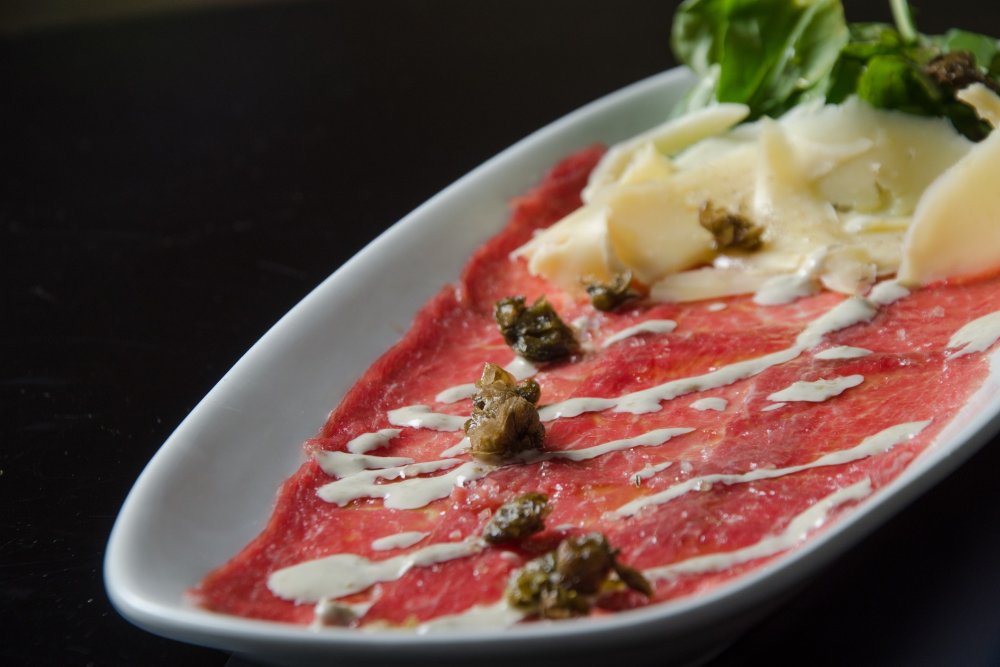
URBANIA / MARCHE
Its location as a hinge between Romagna and the Marche regions makes our cuisine a continuous blend of recipes from the north and central Italy while maintaining its own local characteristics. We emphasize the simplicity of peasant life in our first courses and in the preparation of both pork and beef dishes, not to mention rabbit-based dishes. One of the most renowned dishes is Carpaccio of Marchigiana beef with white truffle. The recipe is straightforward, but the secret lies in the choice of ingredients, including lean beef using fillet, lemon, salt, extra virgin olive oil, and, of course, the white truffle from Acqualagna, one of the products that make our region famous.
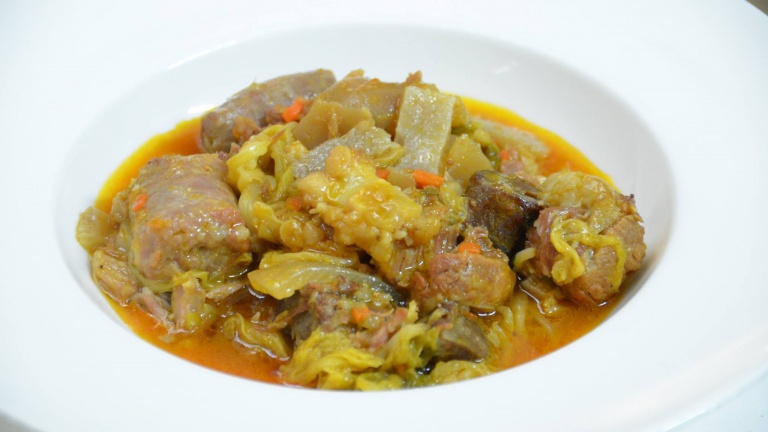
MONZA / LOMBARDIA
The Cassœula with polenta, which is said to have originated in our area, tells the story of a Spanish soldier who, in order to win over a cook, taught her the recipe, which she made a success of. Now it has fully earned its place as the most representative dish of Brianza and is made with polenta, savoy cabbage that has been frosted by the frost, giving it a crunchier texture, with the less noble parts of pork, and loganega sausage, which is also typical of our area. The name has an assonance with the casserole in which it is cooked, but it also comes from the cassoueu, which is the particular spoon used to mix the ingredients.
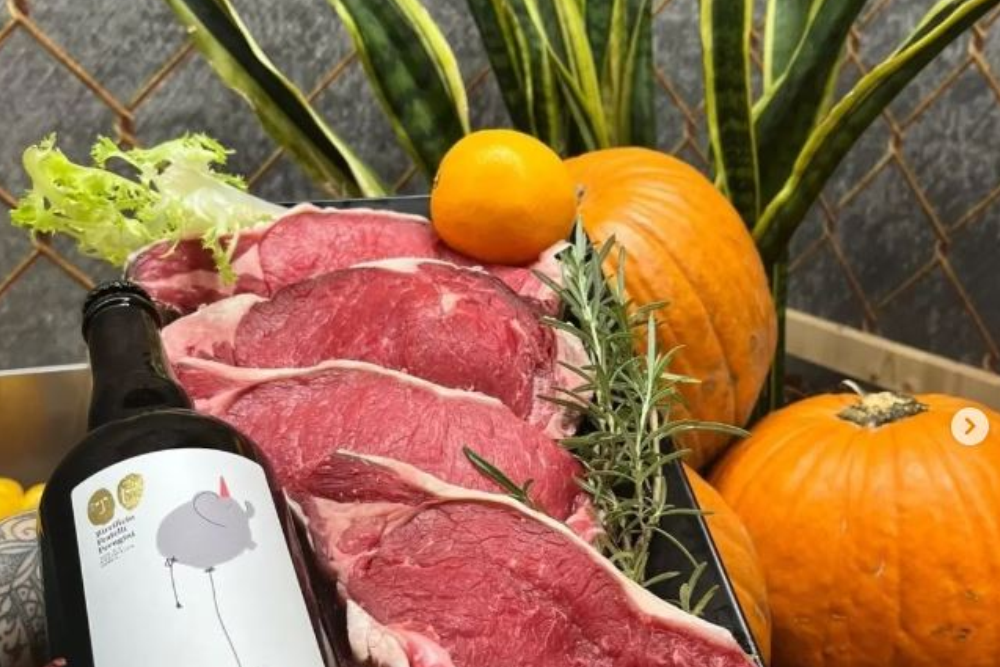
PERUGIA / UMBRIA
Grilled meat has always been one of the most appreciated traditional dishes on the tables of Umbrian homes and restaurants, with meats from sheep, pigs, and, of course, cattle. Our beers, Santachiara, Alzabove, and Santommaso, are the perfect companions for these dishes.
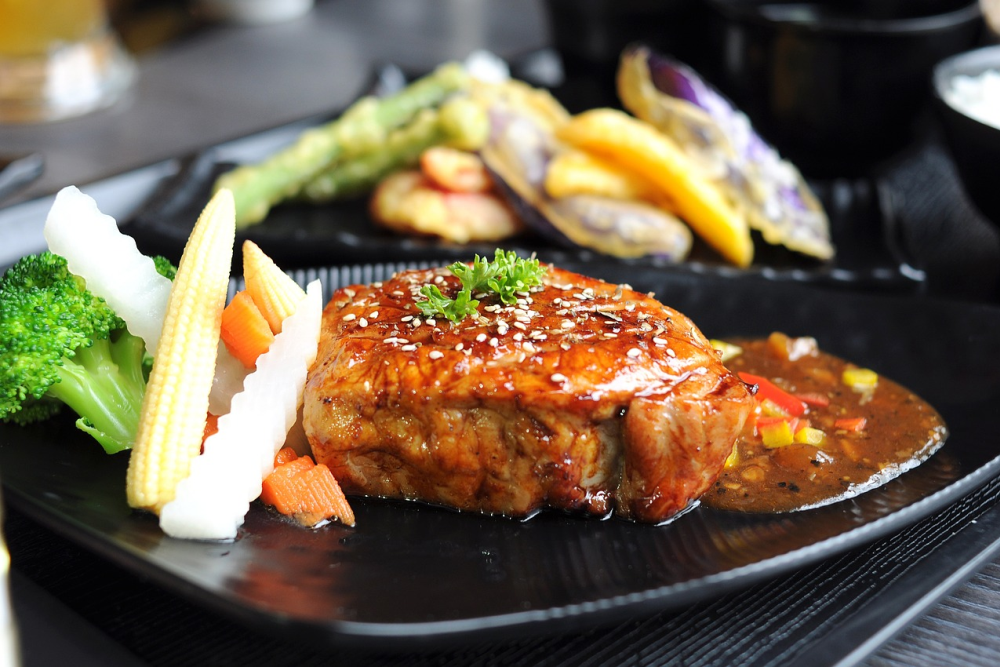
AREZZO / TOSCANA
One of the favorite local dishes among the people of Arezzo is the famous “Braciolona.” It is a traditional Tuscan dish made with pork, herbs, and spices. Braciole all’aretina is renowned for its intense and succulent flavor. The combination of aromatic herbs, garlic, and grilled pork imparts a unique and Arezzo-specific taste to this dish. It is a local specialty that represents authentic traditional Tuscan cuisine and will certainly satisfy the palates of meat lovers.
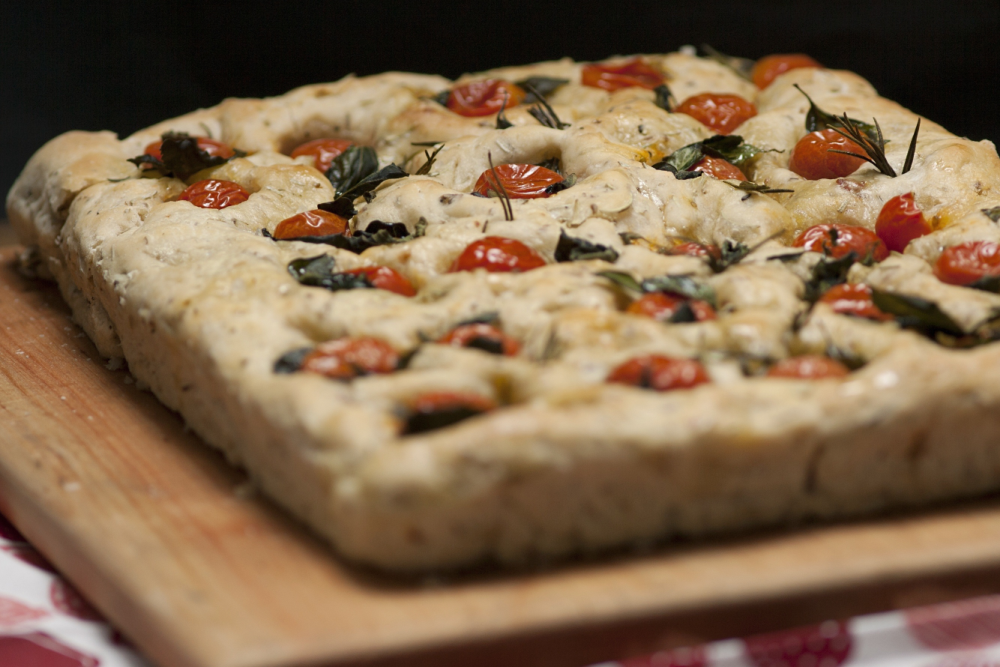
IMPERIA / LIGURIA
One of the most typical recipes from our coastal villages, with an ancient history as it was already present in the local cuisine since the 1300s, is the Sardenaira. It’s a focaccia covered with tomatoes, sardines from our sea, Taggiasca olives, and garlic. We also call it Pissalandrea to recall the name of the illustrious Andrea Doria. Another dish that represents our land is Panissa, a very simple and tasty recipe made from chickpea flour and water. After cooking the mixture, it is left to solidify, and then it is cut into small strips to be served on slices of bread.

L'AQUILA / ABRUZZO
Lamb with cheese and eggs is a traditional delicacy from the Majella region, characterized by a combination of intense and succulent flavors. Typically, we use the lamb shoulder or leg. After seasoning the lamb with garlic, pepper, salt, and olive oil, we let it marinate in the refrigerator overnight. The next day, we roast it in the oven and prepare the cheese and egg sauce, mixing it until it becomes a smooth cream. After the lamb’s cooking time has passed, we pour the sauce over the meat in the baking dish. We put everything back in the oven for another fifteen minutes until the sauce has slightly thickened and turned golden. This dish is usually served with seasonal vegetables or roasted potatoes as sides.

BOLGHERI / TOSCANA
A recipe that is not just a recipe but a true event involving the whole village is the “Wild Boar’s Head in the Castagnetana Style.” A recipe that, to be served on the table, requires the expertise of several individuals, starting with a skilled butcher who can precisely separate the head using an art passed down through generations. Then, it moves on to someone with appropriate space to hang it from the ceiling for a few days, allowing it to bleed, before removing it and starting to season it with… continue
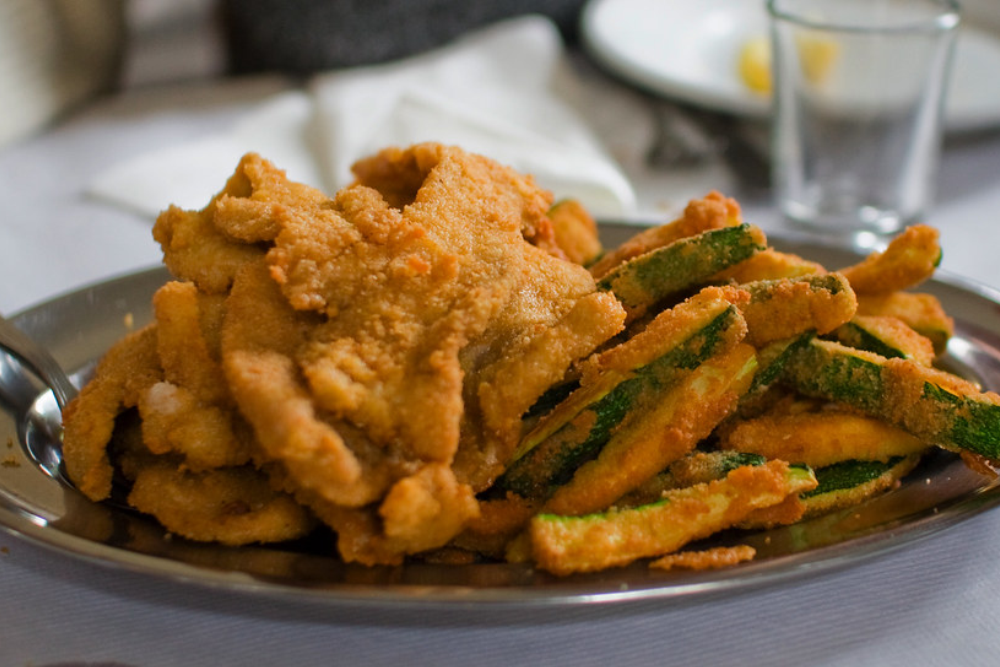
VERCELLI / PIEMONTE
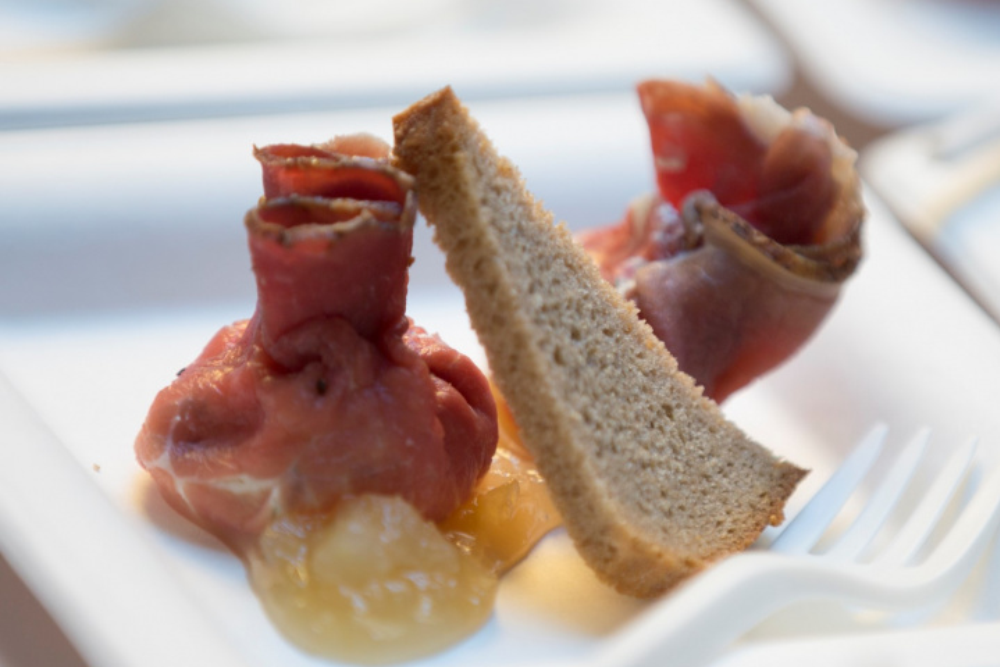
LONA / TRENTINO ALTO ADIGE

SANTA DOMENICA TALAO / CALABRIA
Ingredients for 4 people.
500 g of durum wheat semolina
Water as needed
Equipment.
1 dried cane with a diameter of 3 centimeters and a length of 30 cm
1 millerighe frame comb
Preparation.
Knead the flour, gradually adding water until it becomes homogeneous and easily detaches from the hands.
Let it rest for 30 minutes.
At this point, shape the dough into small pieces and roll them out on a flat surface, then gently pass them over the millerighe comb.
For the seasoning.
500 g of tomato puree
10 cl of extra virgin olive oil
A handful of basil
2 Diavolicchio Diamante chili peppers
100 g of Calabrian pecorino cheese
Preparation.
Cook the tomato sauce, adding the chili pepper once the sauce is cooked. Once the pasta is cooked, mix it with the sauce and finish with the pecorino cheese.
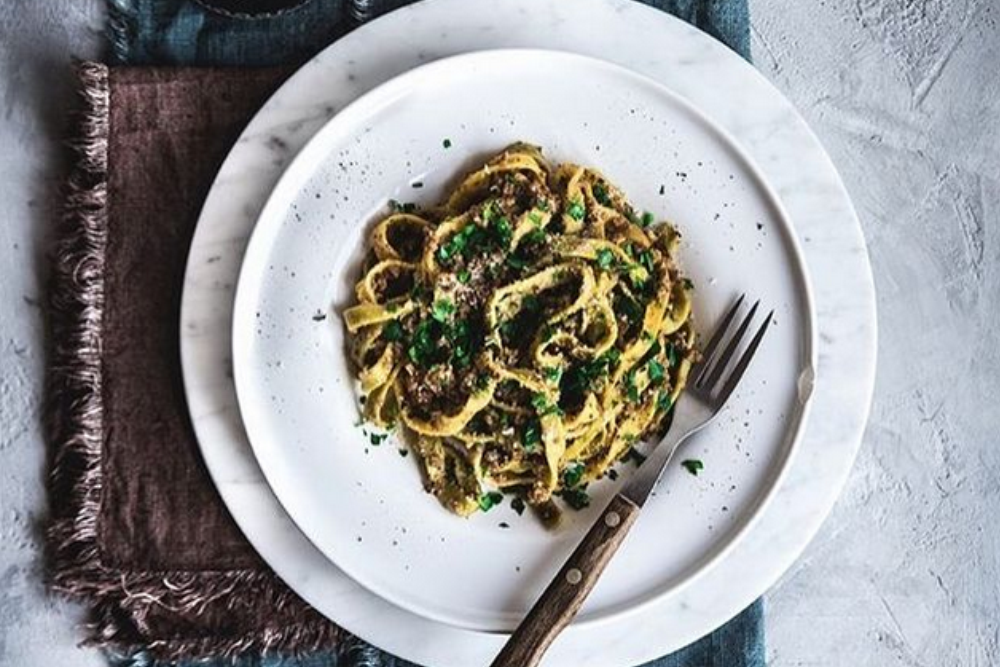
ALBA / PIEMONTE

ALESSANDRIA / PIEMONTE
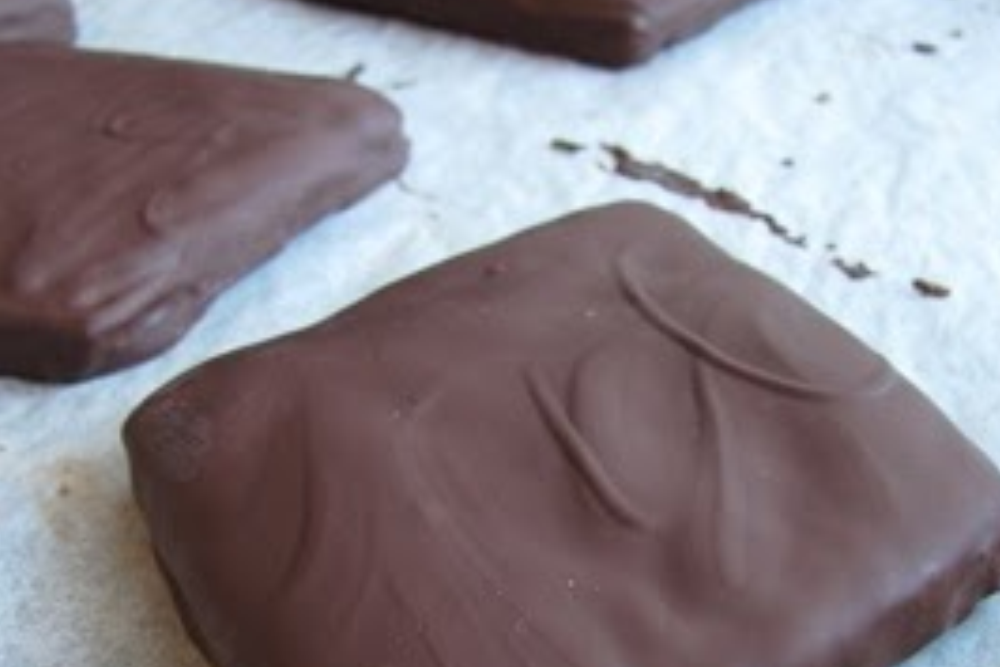
ALTAMURA / PUGLIA
I mustaccioli, dolce tipico natalizio, ha molte varianti regionali, tra cui quella pugliese, dove viene aggiunto del vin cotto per renderli ancora più morbidi. Tra le varianti regionali, c’è anche quella altamurana, dove oltre agli ingredienti classici e il vin cotto, viene aggiunto anche un goccio di Padre Peppe per restituire il gusto dolce e l’aroma intenso dell’elixir. I mustaccioli sono dei dolci tipici della tradizione che vengono solitamente sistemati in cestini e sacchetti da donare a familiari e amici.
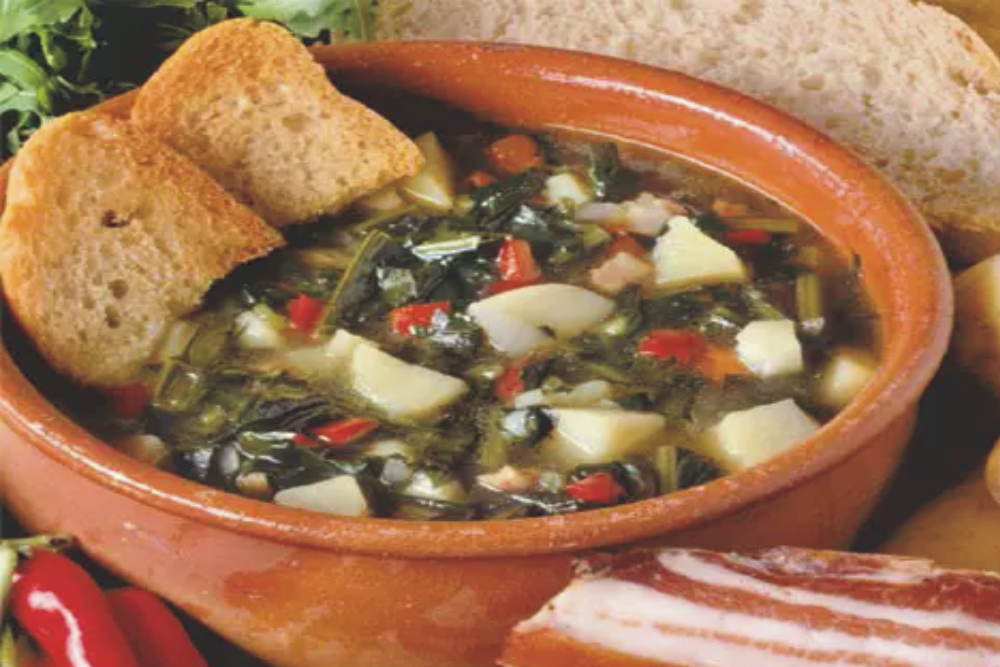
TUSCANIA / LAZIO
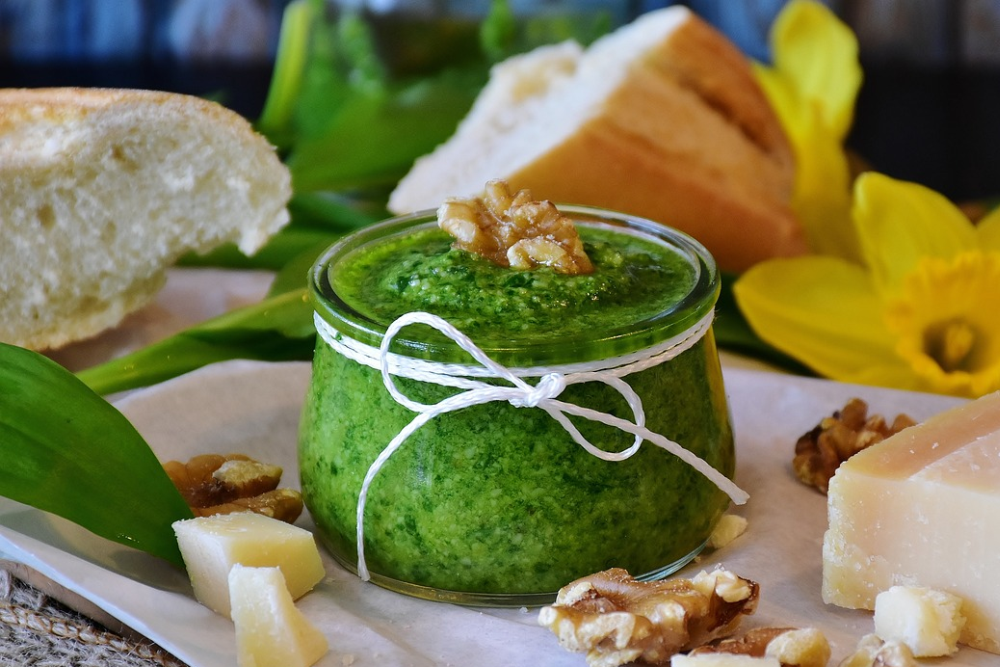
BORGOMARO / LIGURIA
We’d like to suggest a recipe that originates from our meadows because it’s made with wild herbs that can be foraged in the hills surrounding Borgomaro, such as nettles, dandelion, wild chard, and burnet. In our dialect, all these herbs together are called ‘preboggion,’ from which the recipe gets its name, ‘Pesto di preboggion.’ In addition to the herbs, you’ll need slightly toasted pine nuts, garlic, extra virgin olive oil, and a generous sprinkle of Parmesan cheese. Once everything is thoroughly blended, you can put it in a blender to obtain an extraordinary pesto to dress pasta or spread on some fragrant Ligurian bread crostini.

TON / TRENTO

MULAZZO / TOSCANA
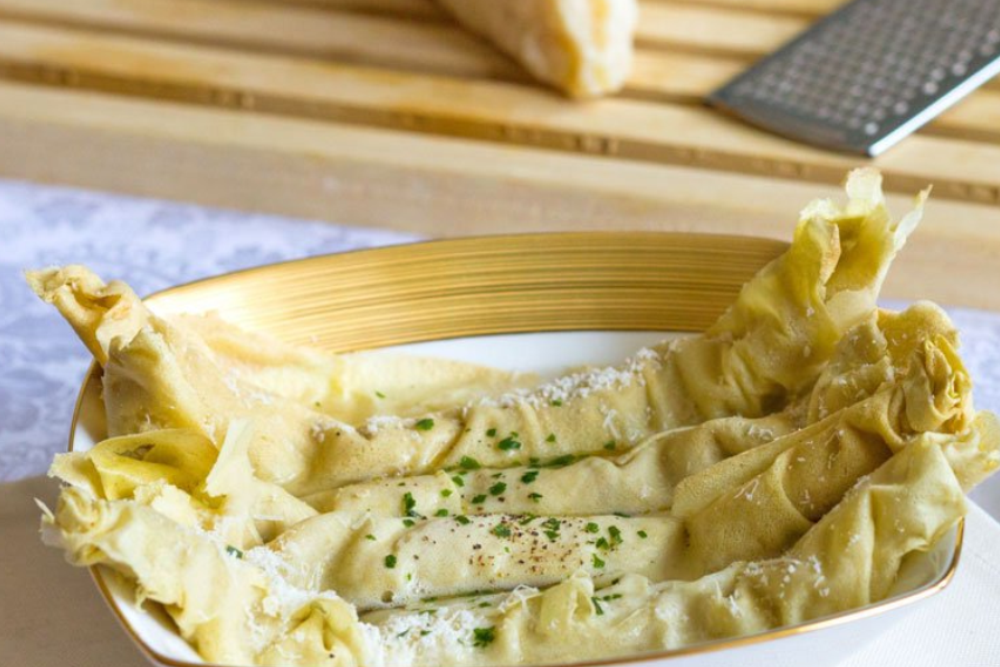
CHIETI / ABRUZZO
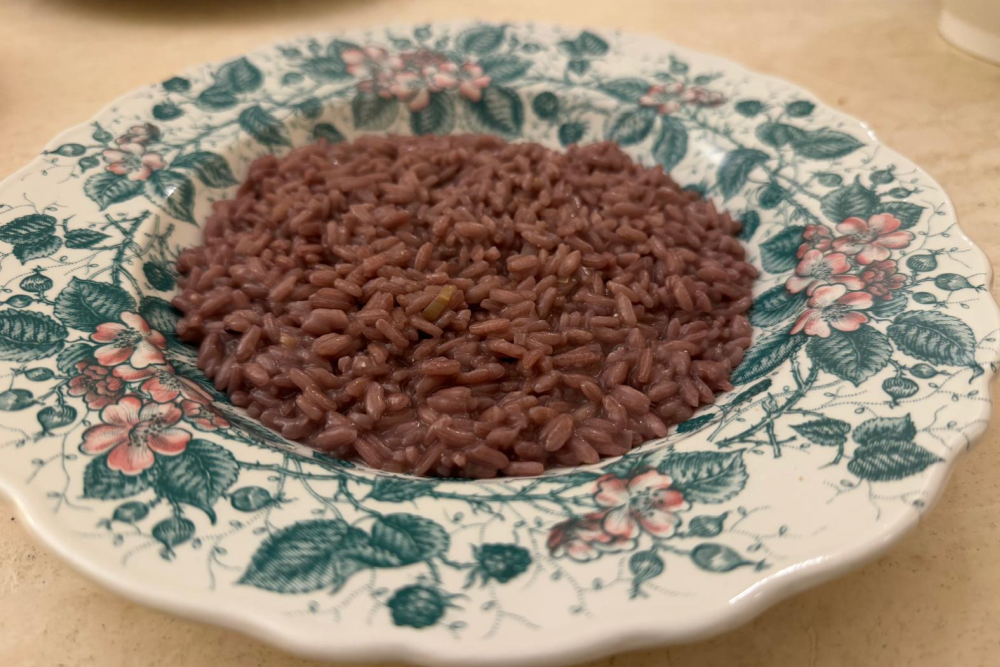
PAVIA / LOMBARDIA

PIVERONE / PIEMONTE
A recipe that never fails to appear on our tables, especially during the winter months, is “Bagna Cauda”.
Bagna Cauda is a warm sauce made with garlic, anchovies, and extra virgin olive oil, traditionally served in a bowl placed at the center of the table. Seasonal vegetables such as carrots, celery, peppers, cauliflower, and cardoon are dipped into the sauce and consumed after being soaked.
The preparation of Bagna Cauda involves slow cooking garlic in olive oil until it becomes soft and aromatic, then adding anchovies and letting them completely dissolve into the sauce. The final consistency should be creamy but not too dense. Bagna Cauda is a very convivial and tasty dish, perfect for sharing moments with friends and family. It is a true symbol of the culinary culture of Canavese and Piedmont, celebrating the authenticity and richness of local flavors.


